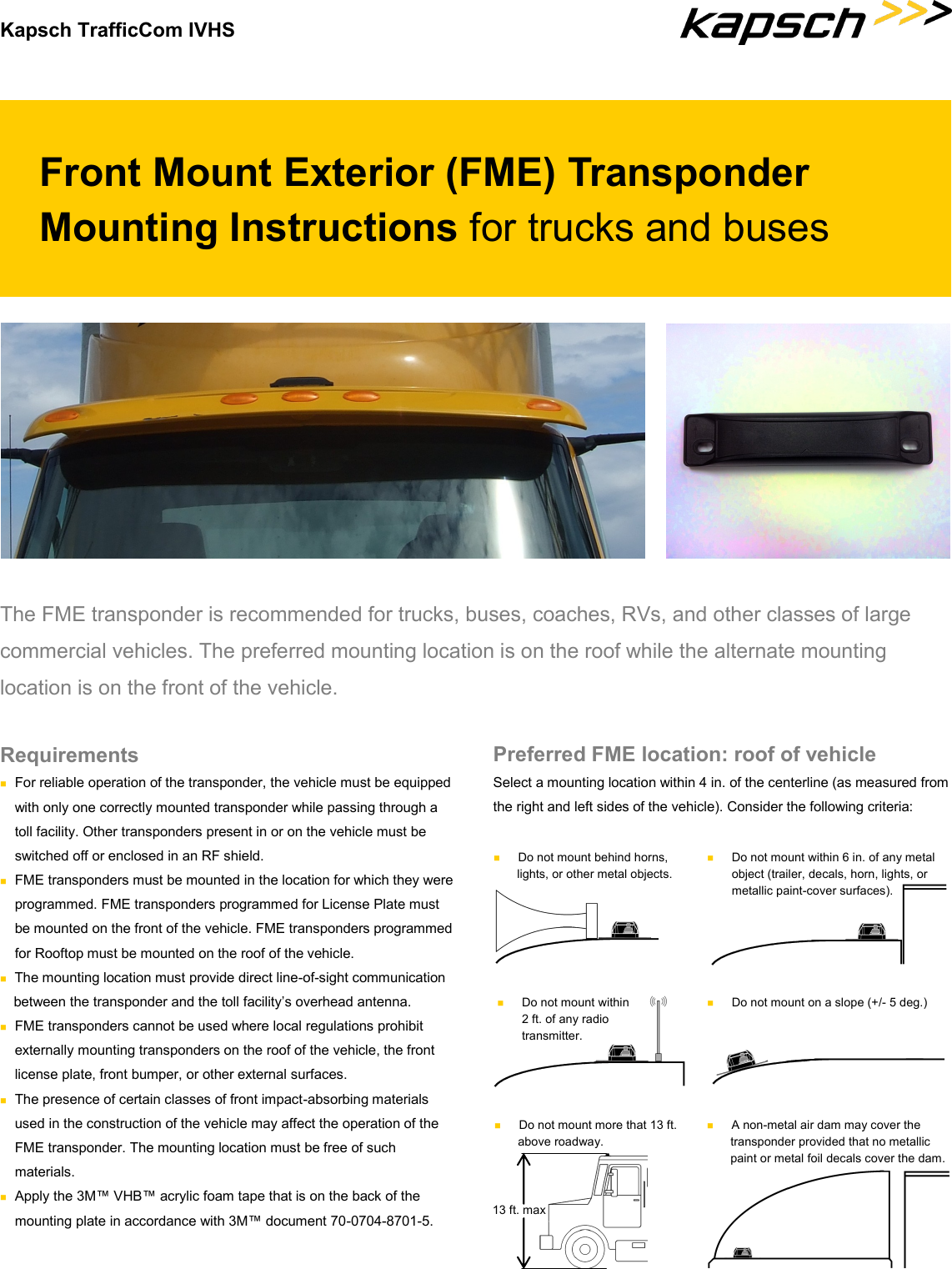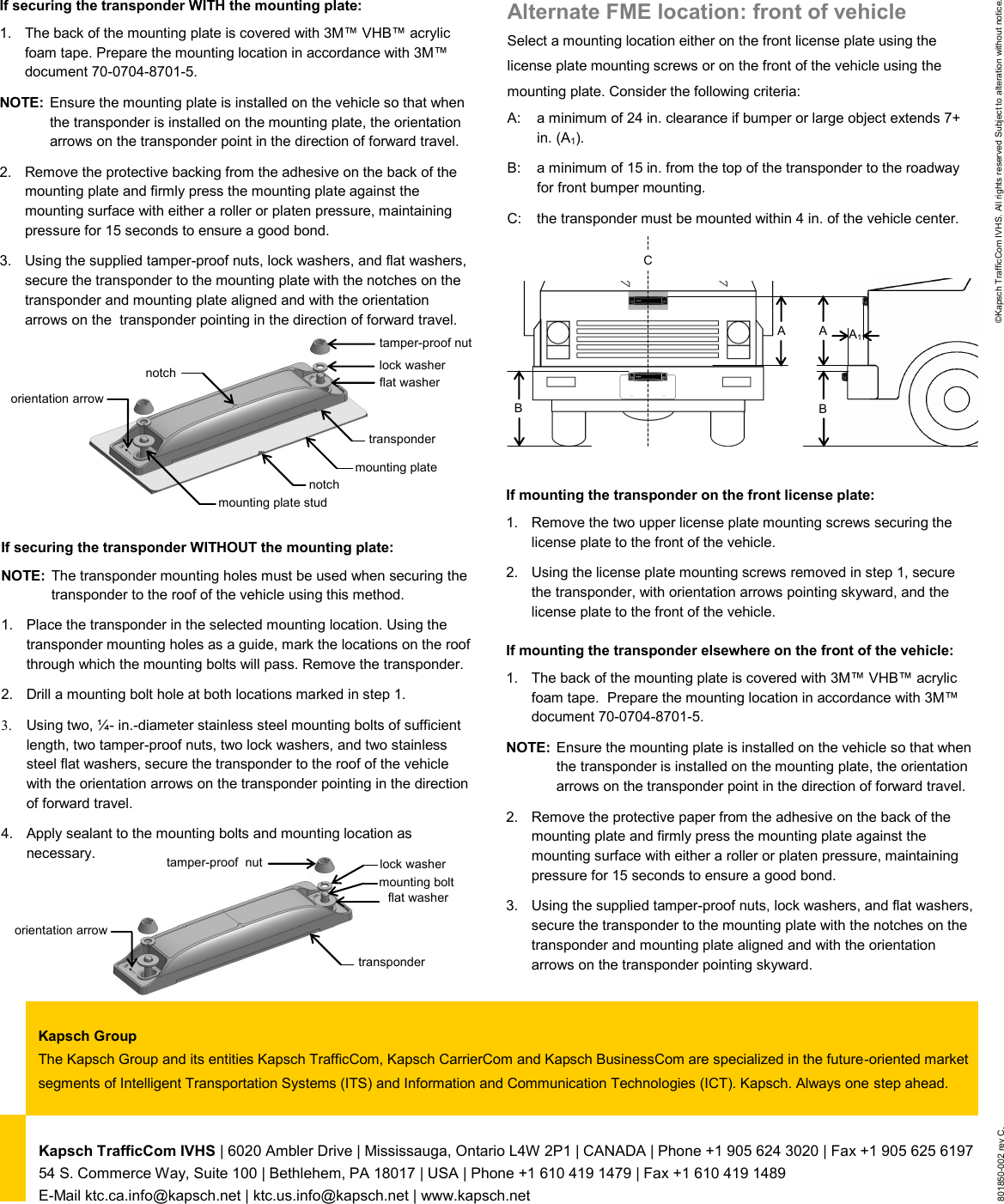KAPSCH TRAFFICCOM CANADA 801800A Janus Exterior Transponder User Manual for trucks and buses
KAPSCH TRAFFICCOM CANADA INC. Janus Exterior Transponder for trucks and buses
Contents
- 1. user manual for passenger vehicles
- 2. user manual for trucks and buses
user manual for trucks and buses

